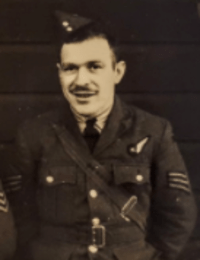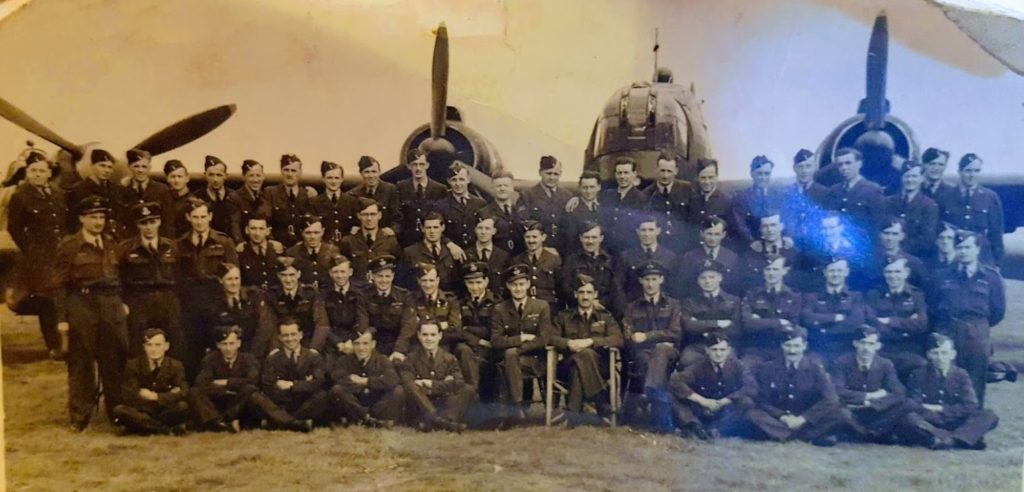
Billy’s Story
Part 2
Part 1 can be found here
The year is 1937
Billy has joined the R.A.F. The images with the story show that he was issued with his uniform and kit on the day of 27/7/37. He is 22.
There is a period of around 4 years before Billy surfaces again. According to my research, during this time period it is believed that he was initially trained as an aircraft mechanic after passing many exams.
In 1940 decisions were being made by the Air Ministry, regarding the need for Flight Engineers. Specialist, trained men to service and repair the planned 4-engined bombers, such as the Halifax which was about to enter service.
The Halifax was a new Bomber Aircraft, built by Handley Page and had 4 Rolls Royce Merlin engines. Capable of 265 to 285mph at 17,500 ft, it could carry around 5,800 lbs of bombs and had a range of 1,860 miles.
It was recognised that the Pilots of these larger aircraft would require assistance as there were no Co-Pilots. Should the Pilot get injured or killed during ops, there was no-one to fly the aircraft. Flight Engineers were introduced in order to reduce their workload. Personally, I do not see the sense in losing such a large and expensive aircraft along with 7 highly trained crew because nobody else could stand in for a disabled Pilot.
Flight Engineers were to be trained in all aspects of the aircrafts mechanical characteristics, fuel systems and gunnery systems.
Flight Engineers were also to be used as replacement gunners during active service. This didn`t go down well with the Squadron Leaders. It took a few years to train Engineers and they regarded this directive as an unnecessary risk. It would have a diminishing effect on the amount of highly trained Engineers at each squadron.
As it happens, there came about many stories about acts of heroism, post war. Flight Engineers were a rare and tenacious breed, performing unbelievable acts of heroism in flight when the proverbial hit the fan. Taking over the controls of aircraft whilst the Pilot had either been killed or injured, bring the aircraft back to base and even landing the aircraft.
Here is an excerpt from a document I found on the Internet whilst doing my research. This truly defines the words “awesome and tenacious” and it seems that some of the old black and white movies got it right….
Typical awards:
DFM to Sgt Robert Currie of 199 Sqn: “This airman was the Flight Engineer of an aircraft detailed to attack Berlin one night in August 1943. Whilst over the target area, the aircraft was hit by anti-aircraft fire and, whilst illuminated by the searchlights, was attacked by an enemy fighter. The controls which regulated the petrol supply from 2 of the tanks were severed. Sergeant Currie, displaying much resource, cut an aperture in the fuselage by means of an axe and then crawled into the wing to turn on the petrol supply so essential for the completion of the return flight. His coolness and resource set a very fine example.”
CGM to Sgt James Norris of 61 Sqn: “This airman was the Flight Engineer of an aircraft detailed to attack Dusseldorf. Soon after crossing the enemy coast, the aircraft was attacked by a fighter and sustained damage. A few minutes later another fighter attacked. The bomber was struck by a hail of bullets. The windscreen was broken, the wireless apparatus and other important equipment were destroyed and the oxygen system, was rendered useless. The Pilot, the Wireless Operator and the Flight Engineer were wounded, and the Navigator was killed. The aircraft became difficult to control but, despite this, the Pilot continued to the target, being greatly assisted by Sergeant Norris, whose strenuous efforts were invaluable. Shortly after the target had been successfully attacked, the Pilot collapsed owing to his wounds. Sergeant Norris took over the controls and, at times aided by another member of the crew succeeded in flying the damaged bomber back to Britain. When an airfield was sighted, Sergeant Norris and his comrade succeeded in rallying the semi-conscious Pilot sufficiently to take-over and land the aircraft safely. Not until then, did Sergeant Norris disclose that he had been wounded in the arm. In circumstances, fraught with great danger, this airman displayed courage, fortitude and determination of the highest order.
It’s now 1941. He is 26 years old.
Billy has been through all the extra training and courses including gunnery and is now a Flight Sergeant / Engineer.
Billy has opted for Tail Gunner during active service. It may be that Tail Gunners got paid an extra shilling day. I think he told me that, but I can`t be sure. But knowing him, he was going to be exactly where he chose to be…Where there was doubt he could, and he would engage directly with the enemy.
Billy is now known as Flight Sergeant Bill Begbie…Gunner B.
To be continued in part 3…….


